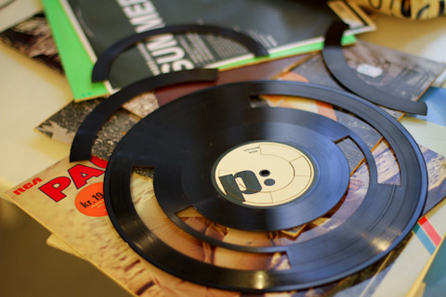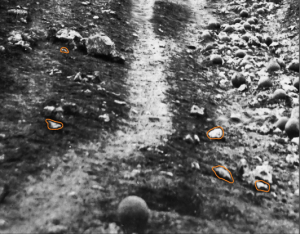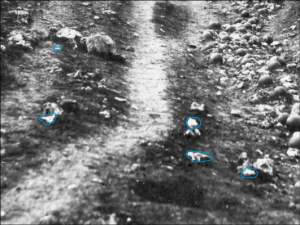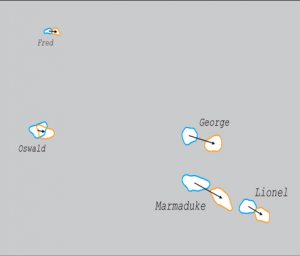
(Taken from: http://www.teenwritersbloc.com/2011/01/28/caelas-reflection-semester/blog-first-semester-image/)
Dream File: A 1960’s Vision of the Future
As a former English major, I’m no stranger to writing and the headaches that come with it. Outlines that you write and rewrite, only to lose in a maze of papers (if you happen to be the typical unorganized writer like me), or working though piles of unnumbered drafts that are near impossible to tell apart. In T.H. Nelson’s informative article, “A File Structure for The Complex, The Changing and the Indeterminate”, Nelson explains ideas central to melding the worlds of writers and information technology, listed below:
- Information Structure (Zippered Lists)
- FIle Structure (Evolutionary List File – E.L.F)
- File Language (PRIDE)
Through the incorporation of these three elements, Nelson dictates their many uses and benefits from the standpoint of writers as well as the philosophical implications behind them.
Information Structure: Trailhiker’s Guide to the Internet
In Nelson’s discussion of the information structure, he mentions Vannevar Bush’s work, As We May Think, as a premise for his explanation of the automatic filing system. While I had read the Bush article previously for this class, Nelson displays the information in a way that makes the material more manageable.
Consider a future device for individual use, which is a sort of mechanized private file and library. It needs a name, and, to coin one at random, “memex” will do. A memex is a device in which an individual stores all his books, records, and communications, and which is mechanized so that it may be consulted with exceeding speed and flexibility. It is an enlarged intimate supplement to his memory.
Having clearly laid out Bush’s relevant ideas on the information system and briefly addressed the lack of development at the time of his writing, Nelson addresses the next main issue, manuscript handling. According to Nelson, three false theories exist concerning the writing process:
- Writing is a matter of inspiration
- Writing is done sitting
- if the outline is good, the writing will be good
As a writer myself, I found myself agreeing with many of the points that Nelson raised. Whether its prose, poetry, or research writing, authors don’t rely solely on inspiration, nor do classic pieces of literature get composed sitting hulled up in Starbucks. While I agree with many of the points raised by Nelson, I did not see how they fit into his overall theme of transforming physical writing into more than a computerized task. In the general scheme of his discussion, this point felt a bit out of place.
Elements of the ELF: No, not that kind of elf…
It was this section perhaps more than the rest of Nelson’s writing that I felt was explained the most fluidly. What initially struck me as a very technically-loaded topic was broken down in a way that even I could understand (which is quite the feat given my lack of technical prowess). According to Nelson’s explination, the ELF can be broken down into three basic elements:
- Entries (discrete unit of info designed by the user)
- Lists (ordered set of entries designated by the user)
- Links (connector, designed by the user, between two particular entries contained in different lists)
While Nelson’s elaboration of these terms was very useful in understanding the basics of the ELF, his discussion of the basic benefits of the system were what grabbed my attention as a writer the most.
Indeed, computer programming with an on-line display and the ELF would have a number of advantages. Instructions might be interleaved indefinitely without resorting to tiny writings. Moreover, the programmer could keep up work on several variant approaches and versions at the same time, and easily document their overall features, their relations to one another and their corresponding parts. Adding a load-and-go compiler would create a self-documenting prgramming scratchpad.
Prior to reading this section, I was paying attention to the reading mostly out of an academic drive (gotta finish that homework!). With this laundry list of uses and benefits, however, Nelson had me hooked. Being able to work on multiple related projects, various drafts and versions, and having access to all of those documents at once in a cohesive and organized way is pretty much the dream of an OCD writer like myself. Having the added benefit of storing all of these documents online in a digital copy is also an added benefit that I don’t believe Nelson stressed too much, but one that I can’t overlook. Finally, I felt that this reading assignment related to me in a way that was easy to understand and, even better, kept me scrolling through page after page out of fascination, not demand.
PRIDE: An ELF’s Best Friend
In this last section, Nelson wraps up his discussion on information processing by expanding upon the file language that corresponds with the ELF system just described, named PRIDE. Designed to facilitate the use of an ELF, the PRIDE system was not actually set in place at the time of Nelson’s writing. The primary function of PRIDE within the ELF system would be handling files and manuscripts (discussed in the previous sections) as well as ordering and documenting files. This section, similar to the ELF discussion, was very accessible to me as a reader and related to issues and concerns that I myself have faced in using online systems to aid my writing and editing.
For a CRT these include quick lookup schemes, preferably with moving menus and means for readily changing the hierarchy of lookup structure; as well as visual cueing and mnemonic formats, including cursor maneuvers, overlays and animated wipes and other transitions.
Overall, what made this article in particular one of the more mentally stimulating and enjoyable to read was the relation that I could see to the topics at hand in my own life and my own experiences. While the thousands of technical terms may never make complete sense to me, I enjoyed getting to make sense of a few things in the sea of information technology thus far and look forward to posting more gripping and technically complex blog posts in the future.












